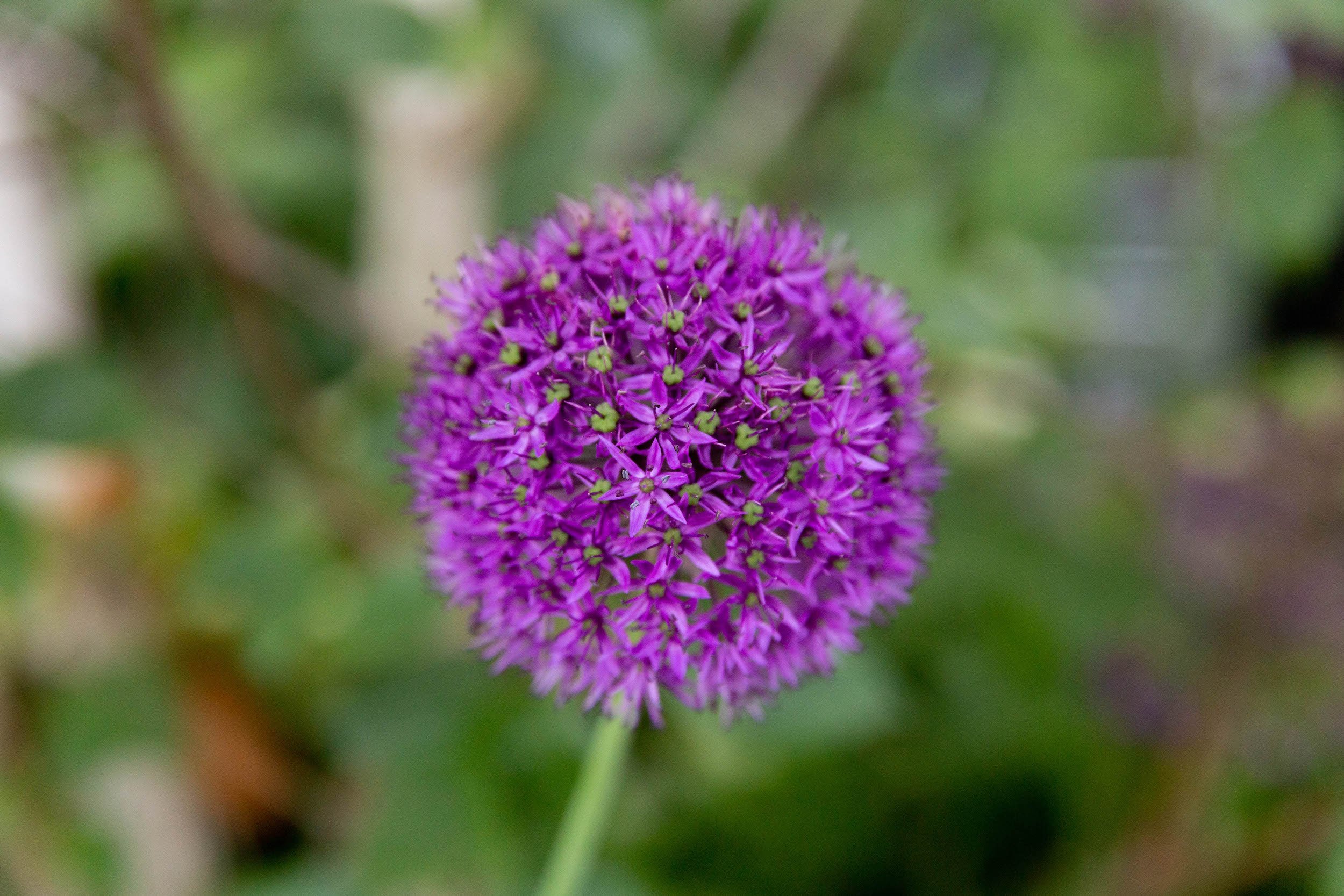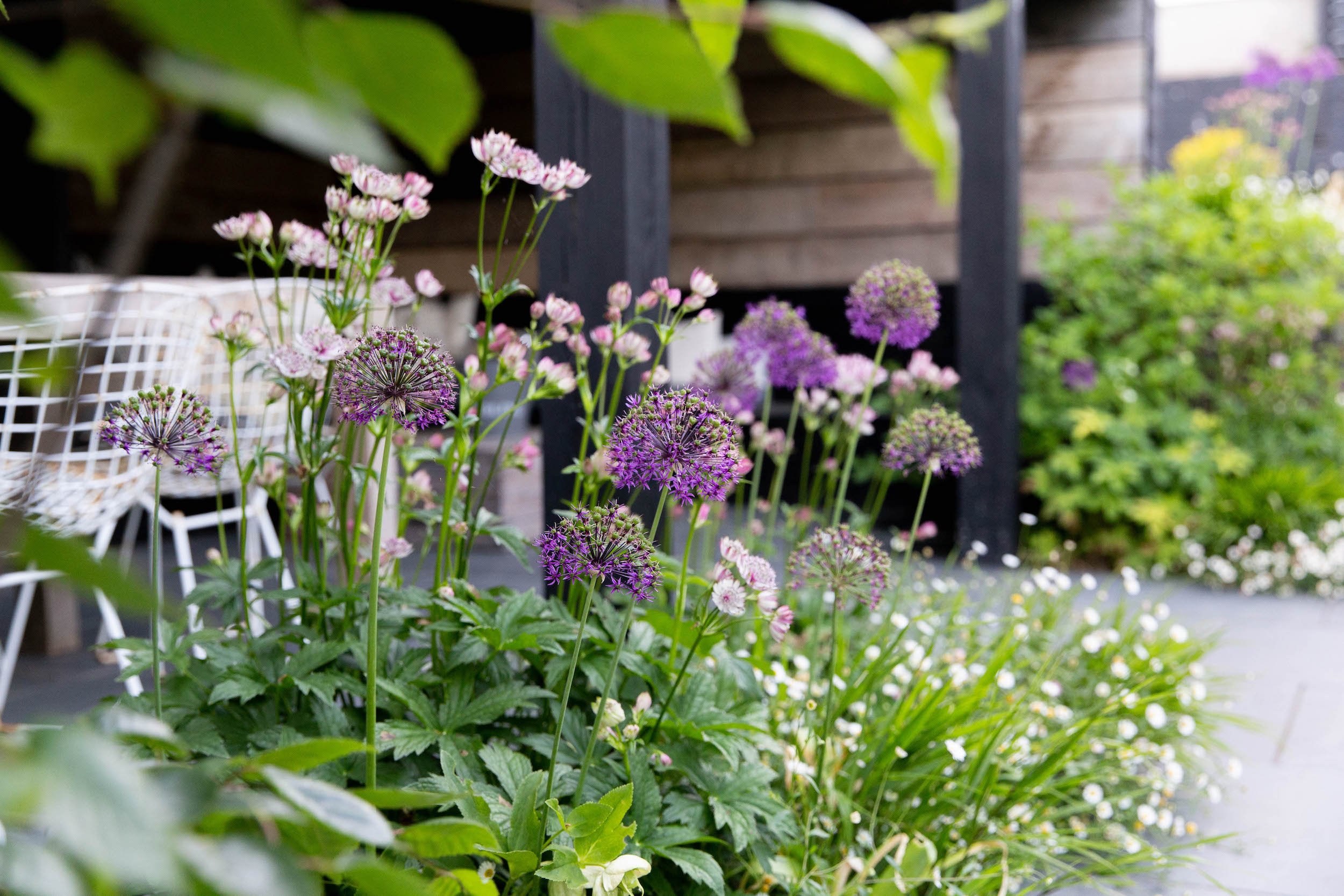Plant guide: alliums
Alliums are one of the most popular Spring bulbs to grow in gardens, and it’s easy to see their appeal.
Large, spherical flowerheads, in shades of blue, purple or white stand above straight green stems, looking a bit like giant lollipops emerging from the beds.
The flowers look great in a huge range of different garden styles, from traditional country cottage planting, to a more contemporary, clean-lined, architectural style. They’re easy to grow, take very little care, come back year after year, are popular nectar sources for bees and butterflies and they also last well as cut flowers. All in all, a seriously high impact plant for a little bit of time spent planting bulbs in Autumn…
Botanical name: Allium
Plant type: Perennial bulb.
Alliums grow back each year from a bulb, first putting out green leaves, followed by a flowering spike that blooms in May – June. After flowering, they die back, disappearing beneath the ground for the winter months, and will re-emerge again the following Spring.
Allium ‘Purple Sensation” - one of our go-to varieties
Allium buds just starting to open planted among tulips
White alliums in a mixed border
Growing conditions:
Alliums are a fairly tolerant bulb, so can cope with a range of different soil conditions, but would ideally like moist but well-drained soil in full sun. Avoid waterlogged positions, which can cause bulbs to rot over Winter.
Alliums are happy growing in the ground in the garden, but also work well in pots, where you can mix them with other plants or just grow en masse to make an eye-catching display on their own.
For taller allium cultivars, such as ‘Globemaster,’ ‘Ambassador,’ and ‘Mont Blanc,’ choose a sheltered location, to prevent the tall stems getting blown over by winds. Planting against a fence or wall, or in a secluded spot in a courtyard can help to protect them from wind damage. If you are growing taller alliums in open borders, then a stake or plant support is useful to protect the stems in rough weather.
Alliums vary in height from around 30cm for the smallest varieties (such as Allium roseum or Allium karataviense) all the way up to 1.5m for some of the largest varieties (Allium giganteum is one of the very tallest). Pick a position appropriate for the height of the allium you’re growing – smaller ones look best at the front of a border, while larger ones suit the middle or back, where they can grow out from among other planting.
How to plant:
Plant allium bulbs in the Autumn, for flowers the following Spring. Plant bulbs to a depth approximately three times as deep as their height.
Bulbs can be planted in amongst established shrubs and herbaceous perennials, or planted en masse in drifts to create a real statement.
Care:
Requiring little care, alliums are a low maintenance plant. If planted in the ground, they shouldn’t need watering, as they’re drought tolerant, so can cope with extended dry spells. If there is an unexpectedly dry spell in Spring time, water if needed. In pots, alliums will need frequent watering, especially when first putting out shoots and when flowering, if there is no rain.
When the flowers start to fade, you can leave seedheads in place on the plant, where their lollipop heads can add architectural structure to planting. When they start to look a bit tatty, you can cut back to the ground. Avoid the temptation to prune out tatty looking leaves, however, as the dying leaves send back energy stores to the bulbs, so that the alliums will grow again in full glory the following year. Only remove leaves when they are completely brown and spent.
Alliums produce new bulblets on top of their bulbs over time, so a single allium can turn into a clump over a few years. Eventually, they will start to get congested, if this happens and you see the plant’s vigour start to wane, just lift and divide them in Autumn.
Grow with:
When the bulbs go dormant after flowering, the leaves can look strappy and a bit messy, so it can help to choose companion plants to mask this. You can use plants that will start to increase in size / foliage / flowers as the alliums die back (usually around June time) such as late summer bulbs or herbaceous plants. Or grow alliums in among evergreen plants that provide structure year round.
Uses:
Alliums are great as a cut flower, their huge flower heads lasting a long time in a vase. Cut them when the flower bud is ¼ to ½ open, so that the rest can open in the vase. Cut with a sharp secateurs or flower snips to avoid damaging the stem.
Our favourite varieties:
· ‘Purple Sensation’ is our go to variety for its deep purple flowers and huge flower head. It’s a reliable variety that works well in the garden or as a cut flower.
· Allium sphaerocephalon is a gorgeous variety with small egg-shaped purple flower heads, and a greener base. It’s a really elegant allium that looks especially good growing alongside grasses.
· ‘Mount Everest’ is a large headed white allium variety, which looks great growing on its own, or mixed in with the purple forms.
Where to buy bulbs:
· Avon Bulbs is always a great place to buy any bulbs, and their allium selection doesn’t disappoint. There’s a huge range of high impact varieties.
· As well as individual allium bulbs, Sarah Raven also offers pre-selected allium “mixes” -- bulbs chosen for varieties that look especially good together and / or flower in succession so you can have a long season of alliums in the garden.
· J. Parkers is more of a traditional gardeners’ plant shop. Their allium selection covers all the classics. Prices tend to be a bit lower than the first two websites.
‘Purple Sensation’ alliums growing in a border in our garden
Allium christophii has huge flowerheads, made up of delicate star-shaped purple flowers







